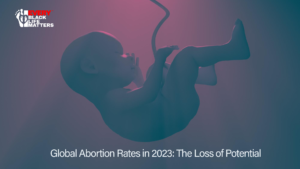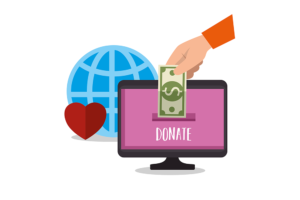Global Abortion Rates in 2023: The Loss of Potential
Written by Contributing Author, Charles Wekesa

By Charles Wekesa
Reports say that in 2023 there were approximately 73 million abortions performed globally. This represents the loss of potential lives whose contribution to society would have benefited many in a myriad of ways, including contribution to cultural diversity, workforce and innovation. The global tally of intentional abortions reminds us of the legal factors influencing the occurrence, approachability, and provision of abortion services. In the complex global debate on the sanctity of life and women’s autonomy, critical roles emerge in the decision-making process regarding abortion.
 The global abortion in 2023 unravels like a complicated weave, interlaced from different fibers of aspirations, shifting narratives and statistics. This issue requires input from affected communities and a nuanced analysis of data points, as there is no simple explanation for it. This article highlights the advancing patterns that mold the conversation, and explores the loss of potential stemming from the vast numbers associated with abortion.
The global abortion in 2023 unravels like a complicated weave, interlaced from different fibers of aspirations, shifting narratives and statistics. This issue requires input from affected communities and a nuanced analysis of data points, as there is no simple explanation for it. This article highlights the advancing patterns that mold the conversation, and explores the loss of potential stemming from the vast numbers associated with abortion.
Unveiling the Staggering Reality of 73 million Abortions
Reports say that in 2023 there were approximately 73 million abortions performed globally. This represents the loss of potential lives whose contribution to society would have benefited many in a myriad of ways, including contribution to cultural diversity, workforce and innovation. The global tally of intentional abortions reminds us of the legal factors influencing the occurrence, approachability, and provision of abortion services. In the complex global debate on the sanctity of life and women’s autonomy, critical roles emerge in the decision-making process regarding abortion.
The statistics reveal a particularly striking scenario in the United States, where nearly 30% of pregnancies are unintended, with 40% ending in abortion. This situation is emblematic of broader global challenges where the discourse between pro-life and pro-choice advocates fosters a divisive dialogue on fundamental ethical, moral, and health-related issues.
The substantial rate of abortions globally, accounting for an estimated 52% of deaths in 2023 and surpassing other causes such as suicide, HIV/AIDS, cancer, and traffic accidents, signals not just a health crisis but a crisis of lost opportunities. This cannot be stated enough: each abortion represents loss of a potential life that could have contributed uniquely to society through innovation, creativity, or leadership. It also highlights the pressing need to address underlying issues such as poverty and inadequate access to education and a support network for the mother.
We must realize that this loss of potential affects entire communities and societies across the global. It is not only the manifestation of socio-economic challenges that lead to high abortion rates, but also underscores the absence of the total faith community taking a stand for upholding the Word of God and sanctity of life. This cannot be left to the “pro-life” advocates alone. We need to begin to mitigate the profound impact of lost potential associated with the staggering reality of 73 million abortions. Let’s move towards a future where every potential life could contribute to the global tapestry of human progress.
African Societies and Legal Complexities
The dialogue concerning the right to abortions vs the sanctity of life has greatly shifted, and the global abortion trends reveal a complex mix of influencing factors. There has been a notable decrease in world abortion rates during the past decades, from 35 to 29 per 1000 women aged 15-44 since the early 1990s, which is an indication of educational opportunities and stronger family support networks for single moms. The enduring inequalities in economic and social contexts, particularly evident in high abortion rates in lower-income countries, underscore the lasting influence of economic factors on access to education, job opportunities and continued dismantling of the family unit.
In the dynamic structure of African societies, the respect for life is deep-seated through ancient traditions like sunlight through leaves – it will always shine through; however, there is a notable discord arising between the contemporary legal framework and traditional beliefs.
The rate of abortion for instance in Africa, averages 38 per 1,000 women who have attained the reproductive age. This number is higher than the global average. When we look at the data from Kenya, it reveals a significant number of abortions occurring where an estimated 48 out of every 1,000 women aged 15 to 49 undergo an abortion each year. This statistic highlights the prevalence of abortion in Kenya and suggests the need for further understanding of the factors contributing to this rate. A key influencer in this game is the US based non-profit organization – Center for Reproductive Rights. Of all the places in Africa, they happen to have an office in Nairobi, Kenya. From their website, you can see a timeline of their efforts, from 2010 to enforce abortion as a legal right within the healthcare system. Does anyone wonder why Kenya’s abortion rates of 48 per 1000 are even higher than the African rate of 38 per 1000.
Community Responsibility and Communal Obligation
Amidst the numerical data and patterns, a glimmer of optimism arises from advocates who champion the sacredness of life. In the African context, communal responsibility plays a pivotal role, as advocates who support the right to life perceive their actions as a communal obligation to protect the unborn. Their willingness to confront legal consequences goes beyond the scope of legal discourse, encompassing a moral and ethical examination of societal principles.
Conclusion
The intricate fabric of global abortion in 2023 involves comprehensive legal battles as seen with the overturning of Roe v. Wade juxtaposed with US non-profits in Africa pushing pro-choice agendas. It is evident that the dialogue concerning abortion knows no geographical boundaries. This is a universal discussion that involves a wide range of beliefs, societal ambitions, and legal frameworks which urge us to participate in a refined and compassionate debate regarding the future of the sanctity of life on a planetary dimension.
On a global magnitude, the objectives for transformation exceed modest statutory measures. There is a collective plea that serves as a rallying cry for the reinstatement of safeguards for the unborn. I urge you, people of faith, to get involved.




